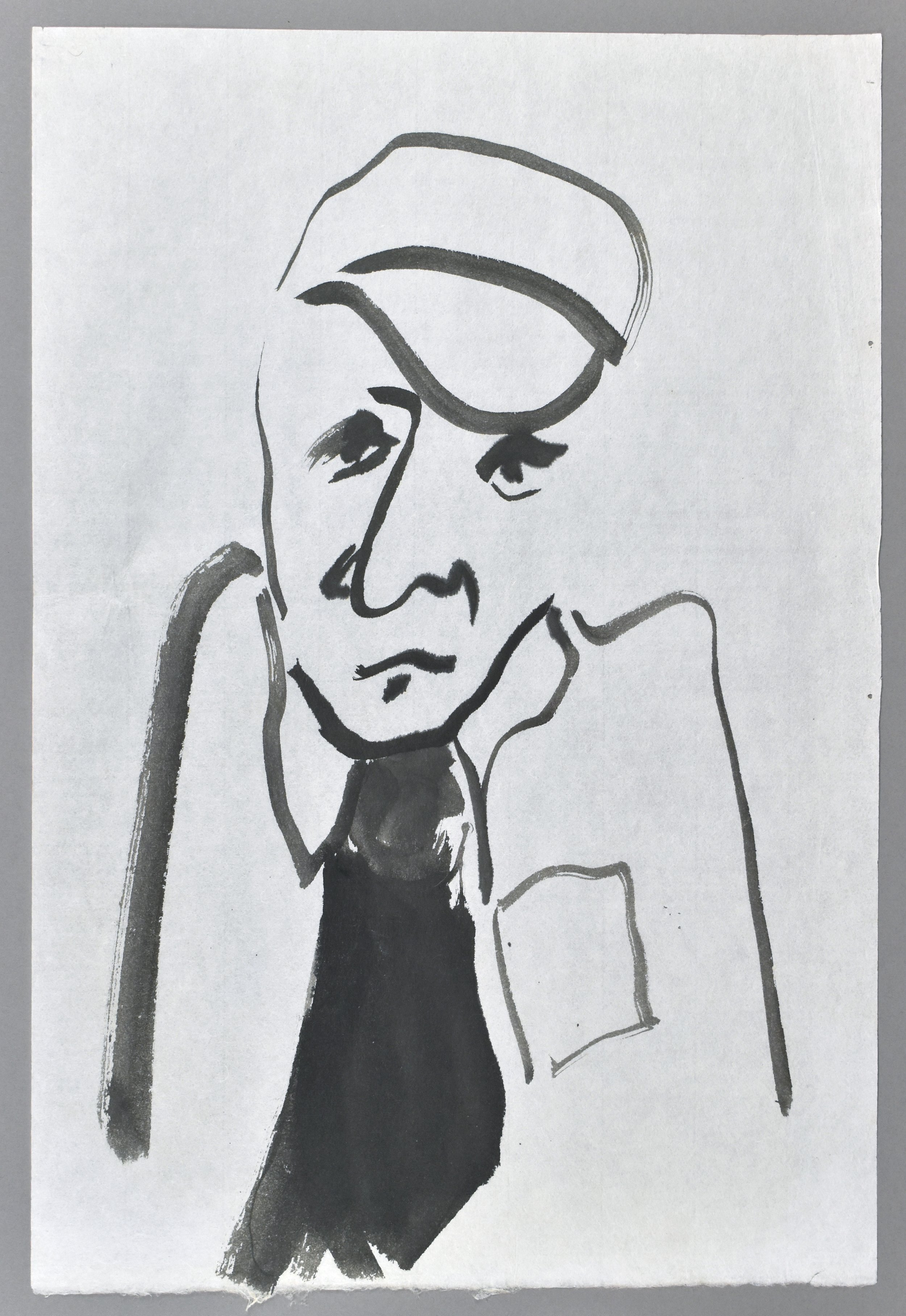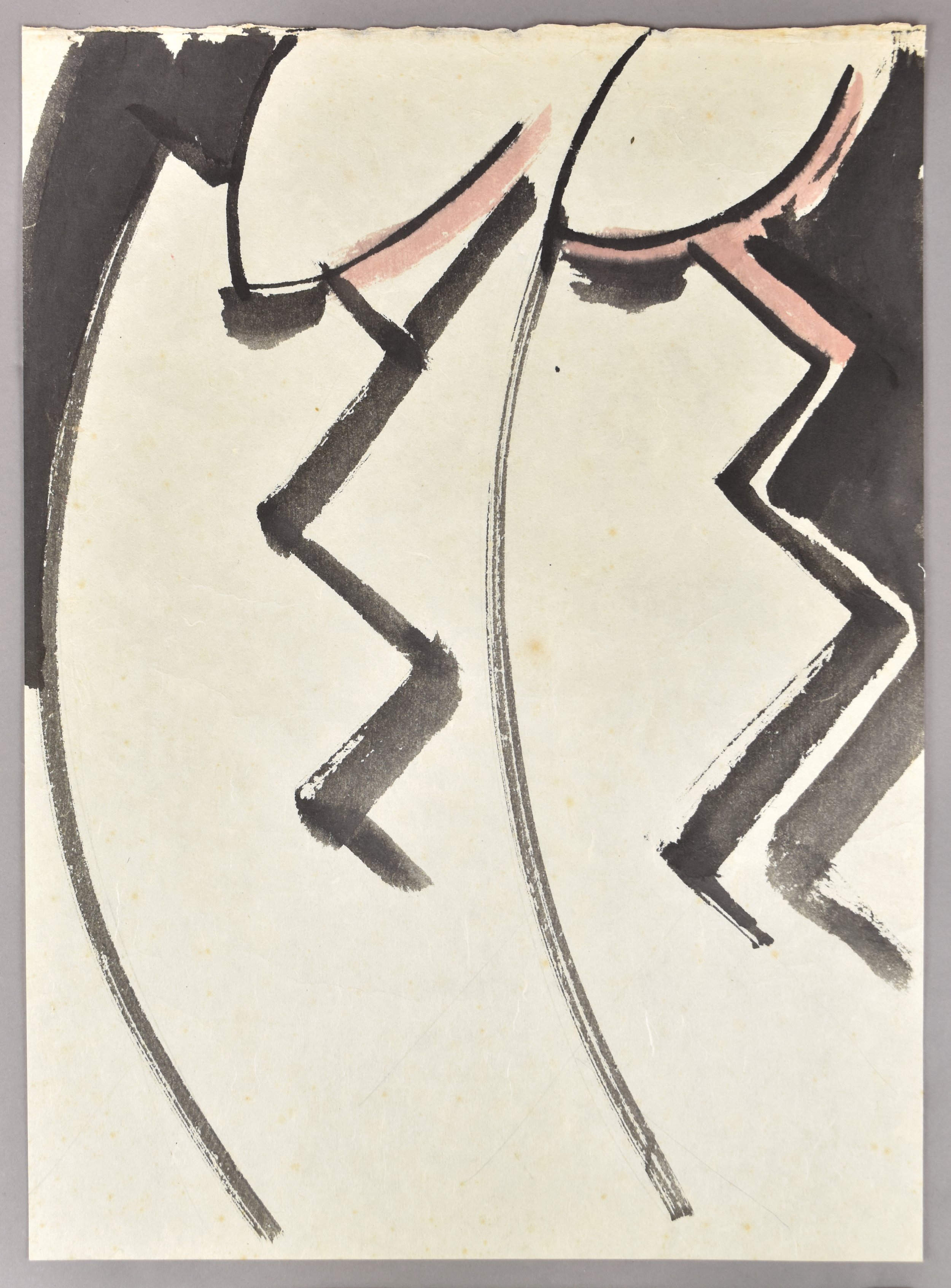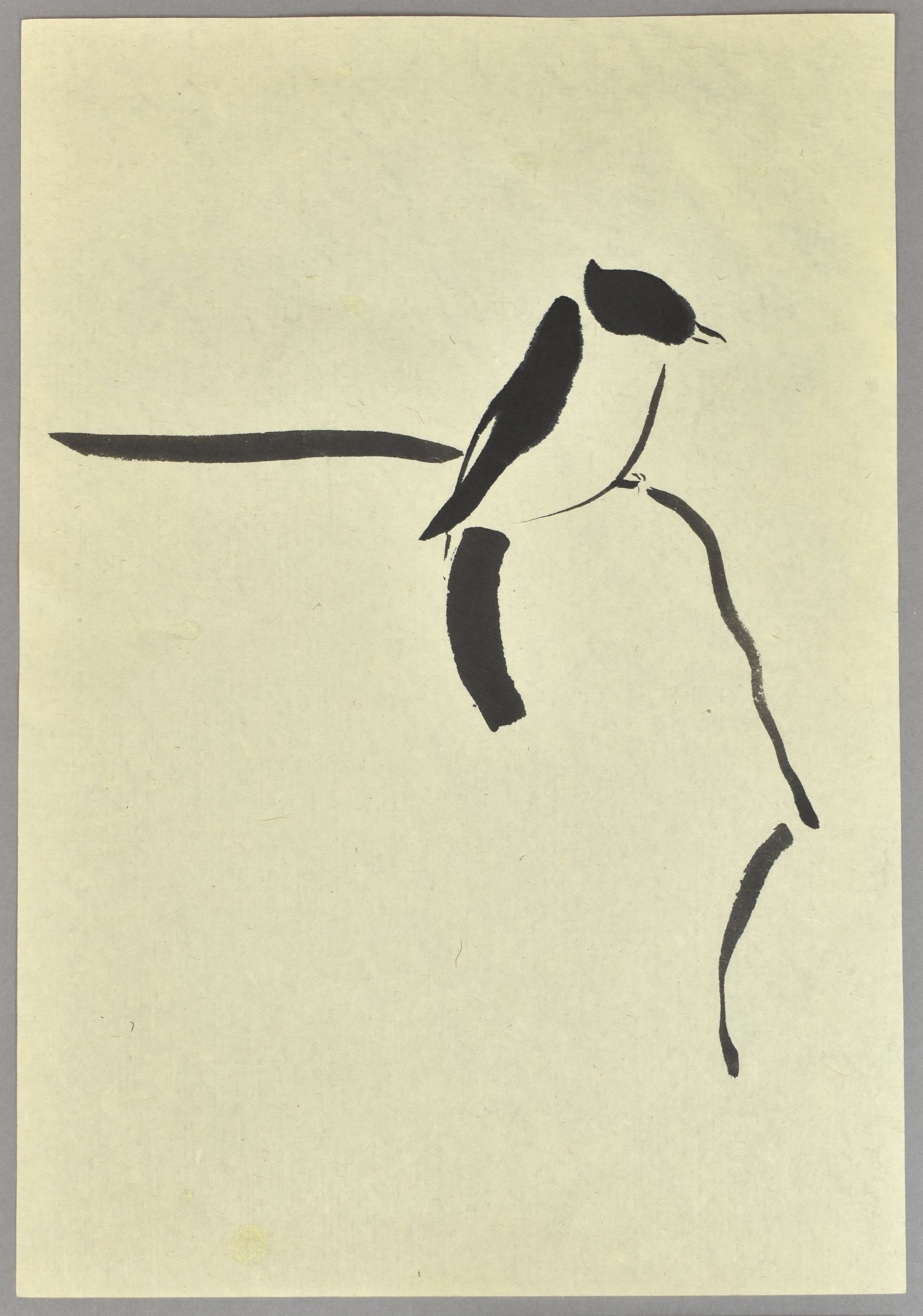Works on Paper Department: Foxing treatment
Our client, and wife of the artist, brought in a portfolio of 20 works by the late Nicol Allan (1931-2019). We were tasked with preparing his work for an upcoming exhibition at Laure Genillard Gallery, London, along with a publication entitled Nicol Allan: Collages by writer and art historian Rye Dag Holmboe. This publication is the first to examine the breadth of Allan’s career and illustrate his sumi, wood reliefs, watercolors, and paper collages. Allan was meticulous with the selection of his materials, using the finest rice papers, sumi inks, and wheat paste for his collages; however, over time some of them developed a common issue seen in works on paper called foxing.
Brown spots on works on paper are commonly referred to as foxing, and form as a reaction to moisture caused by mold spores. Foxing can begin as small blemishes, but in time may spread and darken as they grow and can affect any work on paper including watercolors, prints, maps, documents, or pages from a book. These stains are caused by a microclimate on the surface of the paper: as the paper degrades over time and becomes acidic and absorbent, the level of humidity starts to attract mold and discoloration begins.
Treatment for the foxing of the works by Allan began with testing for solubility of the media. Once stable, they were immersed in a series of baths of filtered water to reduce acidity, discoloration, and staining. The stains were further reduced with local treatment and finally pressed in the blotters to dry.
The works created by Allan are intimate in size and minimal with a quiet gestural abstract quality that invites the viewer to experience the simplest line, reminiscent of other traditions such as Folk Art or Japanese and Chinese calligraphy. The artist rarely showed his work and was fiercely private, avoiding the art world. Ultimately, what mattered most to Allan was his own engagement with his work. We were honored to be a small part of this momentous recognition of the artist’s oeuvre.






